
Trainspotting is a 1996 British black comedy-drama film directed by Danny Boyle and starring Ewan McGregor, Ewen Bremner, Jonny Lee Miller, Kevin McKidd, Robert Carlyle, and Kelly Macdonald in her film debut. Based on the 1993 novel of the same title by Irvine Welsh, the film was released in the United Kingdom on 23 February 1996.

Daniel Francis Boyle is an English director and producer. He is known for his work on films including Shallow Grave, Trainspotting and its sequel T2 Trainspotting, The Beach, 28 Days Later, Sunshine, Slumdog Millionaire, 127 Hours, Steve Jobs, and Yesterday.
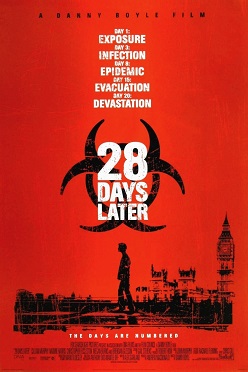
28 Days Later is a 2002 British post-apocalyptic horror film directed by Danny Boyle and written by Alex Garland. It stars Cillian Murphy as a bicycle courier who awakens from a coma to discover the accidental release of a highly contagious, aggression-inducing virus has caused the breakdown of society. Naomie Harris, Christopher Eccleston, Megan Burns, and Brendan Gleeson appear in supporting roles.

Alexander Medawar Garland is an English author, screenwriter, and director. He rose to prominence with his novel The Beach (1996). He subsequently received praise for writing the Danny Boyle films 28 Days Later (2002) and Sunshine (2007), as well as Never Let Me Go (2010) and Dredd (2012). In video games, he co-wrote Enslaved: Odyssey to the West (2010) and served as a story supervisor on DmC: Devil May Cry (2013).
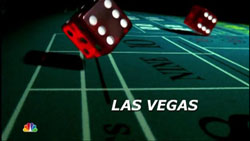
Las Vegas is an American comedy-drama television series created by Gary Scott Thompson. It was broadcast by NBC from September 22, 2003, to February 15, 2008, airing for five seasons. It focuses on a team of people working at the Montecito, a fictional hotel and casino on the Las Vegas Strip. The employees deal with various issues that arise within the working environment, ranging from casino security to restaurant management and valet parking. Las Vegas starred James Caan, Josh Duhamel, Nikki Cox, James Lesure, Vanessa Marcil, Molly Sims, Marsha Thomason, and eventually Tom Selleck. The series originally centered on Ed Deline (Caan), a strict ex-CIA officer who serves as the president of operations for the Montecito. Former Marine Danny McCoy (Duhamel), who is Ed's protégé, later becomes the Montecito's new president.

Juliet Rose Landau is an American actress, director, producer, and ballerina best known for her role as Drusilla on Buffy the Vampire Slayer and its spinoff show Angel, the latter appearance earning her a Saturn Award nomination. She is also known for co-starring as Loretta King in Tim Burton's Ed Wood.

Cree Summer Francks is an American and Canadian actress and singer. She has worked extensively in animation, voicing characters such as Susie Carmichael in Rugrats and Elmyra Duff in Tiny Toon Adventures and related media. She is also known for her roles in Inspector Gadget, Clifford the Big Red Dog, Codename: Kids Next Door, Atlantis: The Lost Empire, Danny Phantom, My Life as a Teenage Robot, Drawn Together, and Puppy Dog Pals.

Peter Lawrence Boyle was an American actor. Known as a character actor, he played Frank Barone on the CBS sitcom Everybody Loves Raymond and the comical monster in Mel Brooks' film spoof Young Frankenstein (1974). He also co-starred in The Candidate (1972). Boyle, who won an Emmy Award in 1996 for a guest-starring role on the Fox science-fiction drama The X-Files, won praise in both comedic and dramatic parts following his breakthrough performance in the 1970 film Joe, and as Wizard in Taxi Driver (1976).

Cillian Murphy is an Irish actor. He made his professional debut in Enda Walsh's 1996 play Disco Pigs, a role he later reprised in the 2001 screen adaptation. His early film credits include the horror film 28 Days Later (2002), the dark comedy Intermission (2003), the thriller Red Eye (2005), the Irish war drama The Wind That Shakes the Barley (2006), and the science fiction thriller Sunshine (2007). He played a transgender Irish woman in the comedy-drama Breakfast on Pluto (2005), which earned him a Golden Globe Award nomination.
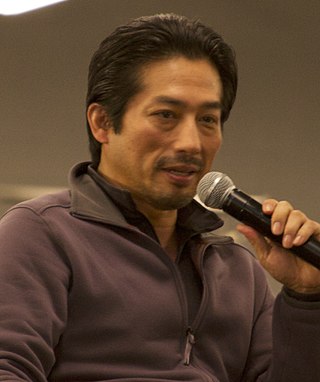
Hiroyuki Sanada is a Japanese actor, producer, singer and martial artist. He began his career in the mid-1960s at the age of six, and gained prominence for his roles in Japanese and Hong Kong action films, later establishing himself as a dramatic actor.

Dark Star is a 1974 American science fiction comedy film produced, scored and directed by John Carpenter and co-written with Dan O'Bannon. It follows the crew of the deteriorating starship Dark Star, twenty years into their mission to destroy unstable planets that might threaten future colonization of other planets.
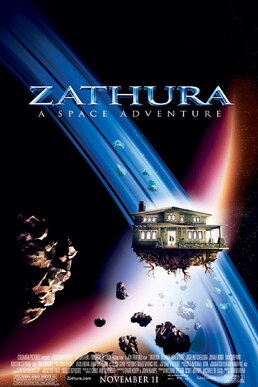
Zathura: A Space Adventure is a 2005 American science fiction adventure film directed by Jon Favreau. It is an adaptation of the 2002 children's book Zathura by Chris Van Allsburg, author of the 1981 children's book Jumanji. It is a standalone spin-off of the 1995 film Jumanji and the second installment of the Jumanji franchise. The film stars Josh Hutcherson, Jonah Bobo, Dax Shepard, Kristen Stewart, and Tim Robbins.
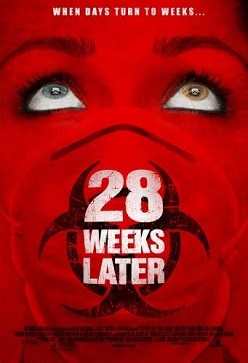
28 Weeks Later is a 2007 post-apocalyptic horror film directed by Juan Carlos Fresnadillo, who co-wrote it with Rowan Joffé, Enrique López Lavigne and Jesus Olmo. The standalone sequel to the 2002 film 28 Days Later, it stars Robert Carlyle, Rose Byrne, Jeremy Renner, Harold Perrineau, Catherine McCormack, Mackintosh Muggleton, Imogen Poots, and Idris Elba. It is set after the events of the first film, depicting the efforts of NATO military forces to salvage a safe zone in London, the consequence of two young siblings breaking protocol to find a photograph of their mother, and the resulting reintroduction of the Rage Virus into the safe zone.

Sunshine: Music from the Motion Picture is the soundtrack album for the 2007 Danny Boyle film Sunshine. It is a joint composition by the electronic band Underworld and film score composer John Murphy. Underworld has a long history of collaboration with Boyle, having been featured on the soundtracks of Boyle's Trainspotting, A Life Less Ordinary, and The Beach. Murphy composed the scores to Boyle's 28 Days Later and Millions.
"42" is the seventh episode of the third series of British science fiction television series Doctor Who. It was first broadcast on BBC One on 19 May 2007. It was the first episode written by Chris Chibnall, the showrunner and lead writer of Doctor Who from the 11th series to the 2022 specials.

Dev Patel is a British actor and filmmaker. He has received various accolades, including a British Academy Film Award and nominations for an Academy Award and two Golden Globe Awards. Patel was included in Time's list of the 100 most influential people in the world and Gold House’s A1 list in 2024.

Slumdog Millionaire is a 2008 British drama film that is a loose adaptation of the novel Q & A (2005) by Indian author Vikas Swarup. It narrates the story of 18-year-old Jamal Malik from the Juhu slums of Mumbai. Starring Dev Patel in his film debut as Jamal, and filmed in India, it was directed by Danny Boyle, written by Simon Beaufoy, and produced by Christian Colson, with Loveleen Tandan credited as co-director. As a contestant on Kaun Banega Crorepati, an Indian-Hindi version of Who Wants to Be a Millionaire?, Jamal surprises everyone by answering every question correctly so far, winning ₹1 crore, and he is one question away from winning the grand prize of ₹2 crore. Accused of cheating, he recounts his life story to the police, illustrating how he was able to answer each question.

127 Hours is a 2010 biographical psychological survival drama film co-written, produced, and directed by Danny Boyle. The film stars James Franco, Kate Mara, Amber Tamblyn, and Clémence Poésy. In the film, canyoneer Aron Ralston must find a way to escape after he gets trapped by a boulder in an isolated slot canyon in Bluejohn Canyon, southeastern Utah, in April 2003. It is a British and American venture produced by Pathé, Everest Entertainment, Film4 Productions, HandMade Films and Cloud Eight Films.

Trance is a 2013 psychological thriller film directed by Danny Boyle with a screenplay by Joe Ahearne and John Hodge from a story by Ahearne. It stars James McAvoy, Vincent Cassel and Rosario Dawson. The world premiere of the film was held in London on 19 March 2013.

T2 Trainspotting is a 2017 British black comedy drama film, directed by Danny Boyle and written by John Hodge. Set in and around Edinburgh, Scotland, it is based on characters created by Irvine Welsh in his 1993 novel Trainspotting and its 2002 follow-up Porno. A sequel to Boyle's 1996 film Trainspotting, T2 stars the original ensemble cast, including leads Ewan McGregor, Ewen Bremner, Jonny Lee Miller, and Robert Carlyle, with Shirley Henderson, James Cosmo, and Kelly Macdonald. The film features a new character, Veronika, played by Anjela Nedyalkova, and includes clips, music, and archive sound from the first film.






















